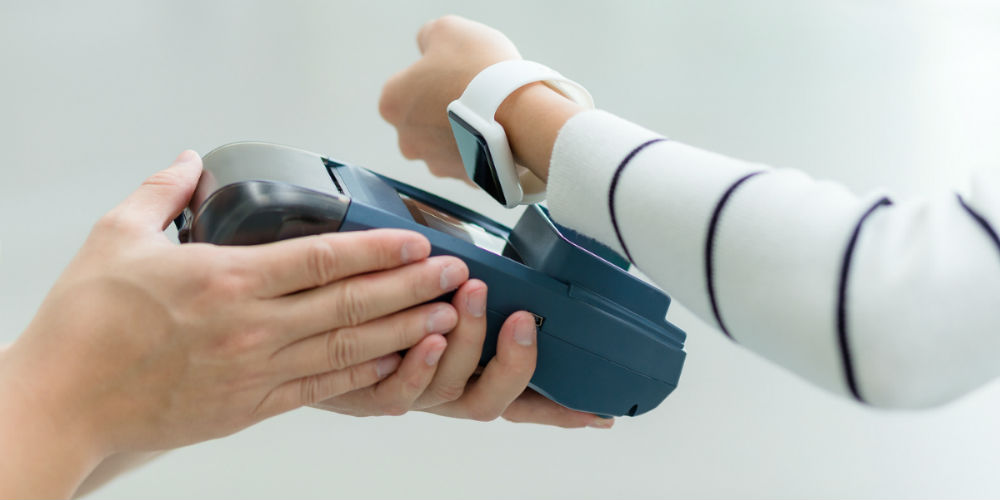Banking brands view surging wearables and wonder: Time to jump in?
New data shows half of all consumers willing to make payments by smartwatch or other wearable device. A handful of banking trailblazers are already in the game. Security remains a concern, but most agree the trend line for financial use of wearables is only going up.

For early morning surfers at Sydney’s Bondi Beach who get a little hungry, there’s no need to dig through their duds looking for a wallet or a phone. If they’re customers of Westpac Bank they can just stroll up to the nearest vendor in their wetsuit, buy some grub and pay by tapping a wristband on the POS terminal.
The wristband is one of several items in the Australian bank’s PayWear product linethat include near-field-communication (NFC) chips that link to whichever account at the bank the customer chooses. The wearable products include several fashion accessories from designer Hayden Cox, one of which is a waterproof, battery-free patch that can be attached to a hat or sleeve. As described on the bank’s website, “The Centsitive Patch is a discreet ‘out-of-sight’ wearable option. … Add it to the inner sleeve of your ski or music festival jacket and simply reach to tap and pay with it.”
Across the globe in northern Europe, Nordea Bank customers will soon be able to make contactless payments using watch bracelets made by the Nordic design brands Triwa and Ur & Penn. Using a Mastercard platform and technology from Fidesmo, which uses a system of card tokenization, the Finnish-based bank plans is to add “jewelry and other gadgets” to the lineup of wearables consumers can use to make payments, including sports bands and smart watches.
“While at the moment it’s fair to describe Fidesmo as a niche offering,” says Juha Risikko, Head of Mobile Commerce at Nordea, “… we believe that payments will be integrated into various types of devices in the future and the combined impact of supporting multiple cases will have a big impact on our customer value proposition.” This is only just the beginning, the Nordea executive concludes.
continue reading »




